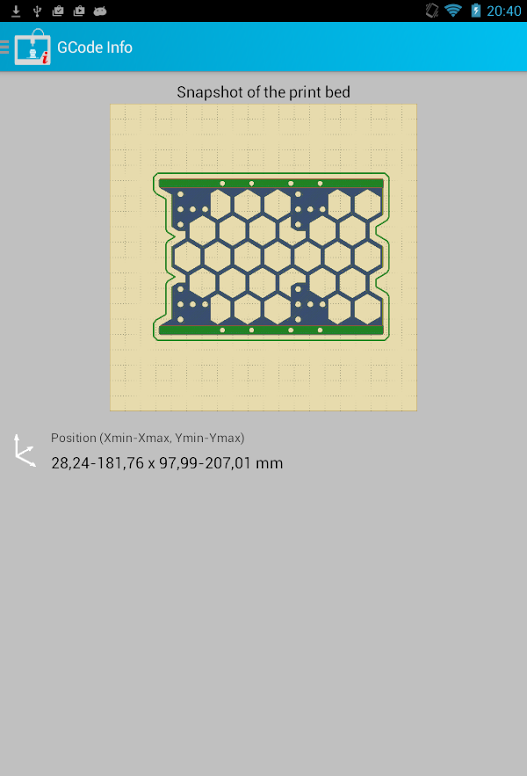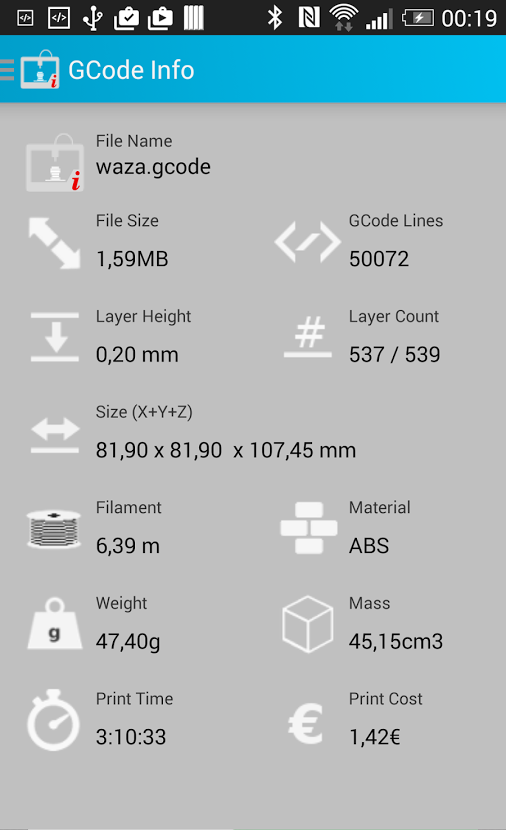Mathias Dietz began 3D printing in 2012 by purchasing a RepRap Prusa Mendel Kit. While he says it took him a few weeks to assemble the kit, build a custom chassis and start printing, he was greatly impressed by the support he got from the community and by the large number of available tools at his disposal.
Dietz, a software engineer who works at IBM in Mainz, Germany, codes on the IBM Spectrum Scale project during the day, but during the evening he spends his time 3D printing and writing code to make the technology easier and more efficient to use.
“I was fascinated by the 3D printing toolchain and respect the complexity of slicer tools like skeinforge or slic3r,” Dietz says. “But after a while. I figured out that due to the complexity of the slicer tools, many things can go wrong – and they do go wrong. The most time consuming part of the calibration is to configure and understand the slicer options.”
So Dietz says he began researching quick and easier ways to check the the output of a slicer. He says he found reading gcodes less than satisfying and found that other tools failed to provide “the granularity and details needed.”
“I decided to write the GCodeInfo tool,” Dietz says. “It helped me with understanding some details of the sliced model like material use and cost, and with improving the print speed by showing some statistics about the speed distribution.”
Not content to stick with the status quo, Dietz then wanted to understand what’s happening via graphical illustrations. That led him to take the existing code base of GCodeInfo, used to visualize the gcodes, and build his GcodeSimulator.
“To my surprise it was quite easy to visualize the gcodes and show the corresponding details because GCodeInfo already provided the most important things,” he adds.
Now Dietz has released his GCodeInfo App as an adjunct to his other programming efforts. He says this latest app can analyze 3D print model files to show detailed information like material price and how long a particular object will take to print.
According to Dietz, the GCodeInfo App can also help optimize the print time of a 3D model and reveal the average print speed by layer.
In addition to those handy features, the App can predict the length of filament needed, show the layer height and number of layers required, display information about the slowest and fastest layer output times and display the print time for each layer.
You can download GCodeInfo App in the Google Play Store for free, and you can get more information about Deitz’ other apps, GcodeInfo, GCodePrintr and GcodeSimulator, at his website here…
Will you use any of these Android apps to help you out with your 3D printing tasks? Let us know in the GCodeInfo App forum thread on 3DPB.com.
Subscribe to Our Email Newsletter
Stay up-to-date on all the latest news from the 3D printing industry and receive information and offers from third party vendors.
You May Also Like
Precision at the Microscale: UK Researchers Advance Medical Devices with BMF’s 3D Printing Tech
University of Nottingham researchers are using Boston Micro Fabrication‘s (BMF) 3D printing technology to develop medical devices that improve compatibility with human tissue. Funded by a UK grant, this project...
3D Printing Webinar and Event Roundup: April 21, 2024
It’s another busy week of webinars and events, starting with Hannover Messe in Germany and continuing with Metalcasting Congress, Chinaplas, TechBlick’s Innovation Festival, and more. Stratasys continues its advanced training...
3D Printing Webinar and Event Roundup: March 17, 2024
It’s another busy week of webinars and events, including SALMED 2024 and AM Forum in Berlin. Stratasys continues its in-person training and is offering two webinars, ASTM is holding a...
3D Printed Micro Antenna is 15% Smaller and 6X Lighter
Horizon Microtechnologies has achieved success in creating a high-frequency D-Band horn antenna through micro 3D printing. However, this achievement did not rely solely on 3D printing; it involved a combination...



































